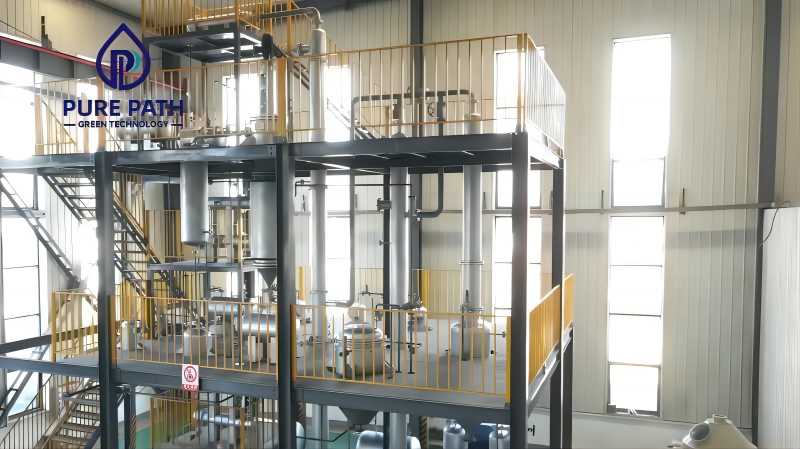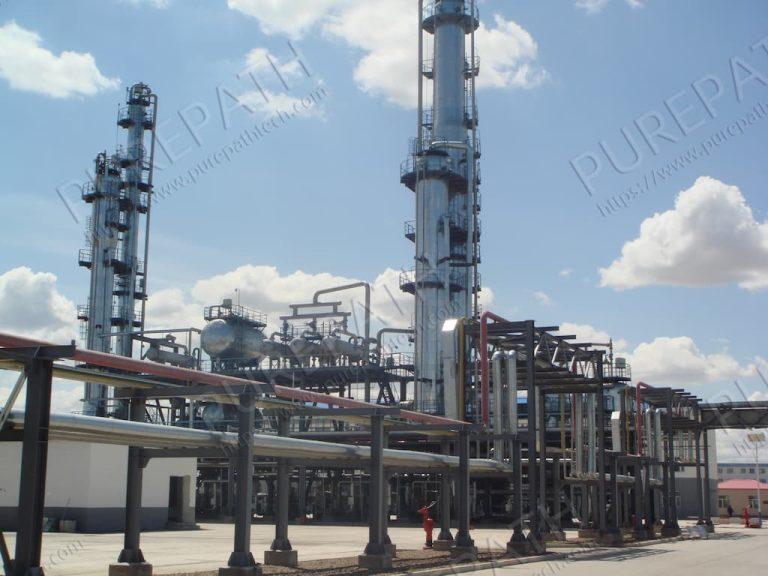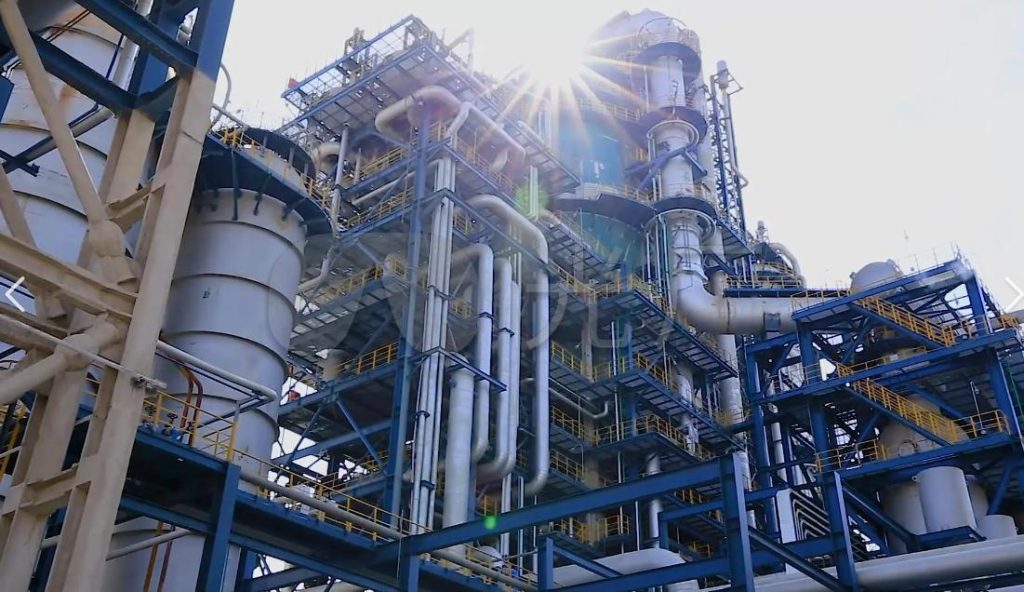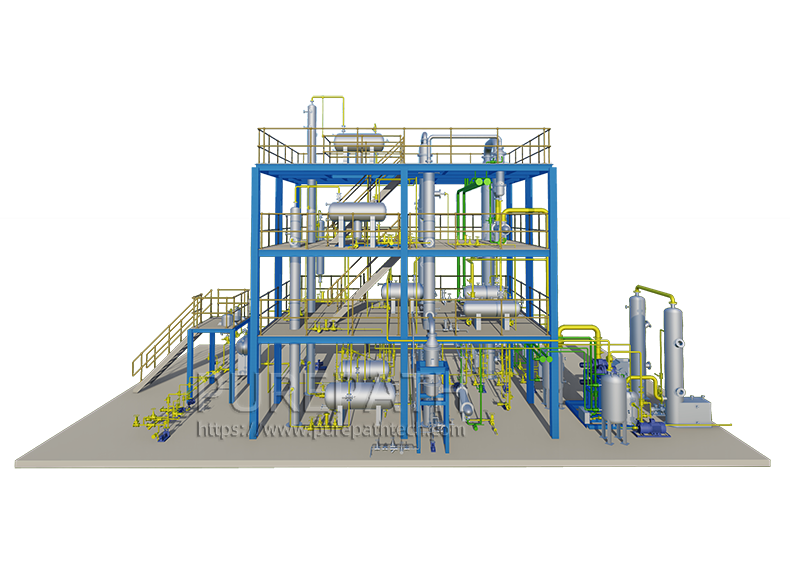Oxidative Desulfurization Techniques: Comparative Analysis of Different Fuel Types
The reduction of sulfur content in fuels is a significant focus within the energy industry. Sulfur compounds in fuels contribute to harmful emissions, causing environmental pollution and posing health risks. Oxidative Desulfurization has emerged as a promising technology to address these challenges.

Oxidative Desulfurization for Fuel
Oxidative desulfurization is a vital technique for reducing sulfur content in fuels, addressing the environmental and health issues associated with sulfur emissions. Unlike traditional hydrodesulfurization (HDS), which operates under high temperatures and pressures, Oxidative Desulfurization functions under mild conditions. This makes Oxidative Desulfurization an energy-efficient and cost-effective alternative.
The process:
- The Oxidative Desulfurization process starts by oxidizing sulfur-containing compounds into more polar sulfones. This transformation uses oxidizing agents like hydrogen peroxide, organic peroxides, or ozone. Catalysts often facilitate this oxidation reaction, enhancing both the reaction rate and selectivity for effective sulfur compound conversion.
- After oxidation, the sulfones are removed from the fuel using various meth Oxidative Desulfurization. Common techniques include liquid-liquid extraction, where sulfones are extracted into a polar solvent, and adsorption, where sulfones are captured on a solid adsorbent material. These methOxidative Desulfurization ensure the efficient separation of sulfones from the fuel, significantly lowering sulfur content.
Oxidative Desulfurization is versatile and suitable for various fuels, including diesel, gasoline, and jet fuel. Its mild operating conditions and compatibility with existing refinery infrastructure make it an attractive option for fuel desulfurization. Additionally, Oxidative Desulfurization can integrate with other desulfurization processes to achieve ultra-low sulfur levels, helping meet stringent environmental regulations and promoting cleaner, more sustainable fuel production.
Comparative Analysis of Oxidative Desulfurization for Different Fuel Types
The effectiveness of Oxidative Desulfurization in removing sulfur varies depending on the fuel type due to differences in the chemical composition and the nature of the sulfur compounds present. Here’s a more detailed breakdown:
1. Diesel: Diesel fuel typically contains a mix of simple sulfur molecules like dibenzothiophene (DBT) and its derivatives. These are readily converted to sulfoxides and sulfones by Oxidative Desulfurization catalysts, leading to high sulfur removal efficiencies exceeding 90%. This makes Oxidative Desulfurization a valuable tool for refineries to meet increasingly stringent regulations on sulfur content in diesel.

2. Gasoline: While Oxidative Desulfurization can effectively remove sulfur from gasoline as well, the process can be more complex. Gasoline contains a wider variety of hydrocarbon chains compared to diesel, and some of these lighter fractions can react with the oxidant used in Oxidative Desulfurization, leading to the formation of undesirable oxygenates or gum. This necessitates additional downstream processing steps to remove these byproducts and ensure gasoline quality remains within specifications.
3. Marine Fuels: Heavy fuel oils used in marine vessels often have a high sulfur content. Stricter regulations implemented by the International Maritime Organization are pushing the industry to adopt cleaner fuels. Oxidative Desulfurization offers a viable solution for Heavy fuel oils desulfurization because:
- Compatibility with Existing Infrastructure: Unlike Heavy fuel oils, Oxidative Desulfurization operates at milder conditions, allowing for integration with existing refinery infrastructure.
- Effectiveness on Complex Sulfur Molecules: Heavy fuel oils contain more complex sulfur molecules compared to diesel, but recent advancements in Oxidative Desulfurization catalyst design have shown promising results for their removal.
4. Biofuels: Biofuels derived from vegetable oils often contain organic sulfur compounds. Oxidative Desulfurization shows potential for desulfurizing these biofuels; however, the specific effectiveness depends on the feedstock and the type of sulfur compounds present. Further research is ongoing to optimize Oxidative Desulfurization for different biofuel feedstocks, making it a potential future solution for cleaner biofuels.
In conclusion, Oxidative Desulfurization offers a versatile approach to fuel desulfurization, but its effectiveness varies depending on the fuel type and the specific sulfur compounds present. Ongoing research is continuously improving Oxidative Desulfurization processes for different fuels, paving the way for a future with cleaner-burning fuels across the board.
Benefits of Purepath Ultrasonic Oxidative Desulfurization Plants

Purepath Ultrasonic Oxidative Desulfurization Plants take fuel cleaning to the next level. These innovative systems leverage the power of sound waves to deliver exceptional results in sulfur removal and overall fuel quality improvement.
- Ultrasonic Advantage: The secret lies in the use of ultrasonic technology. High-frequency sound waves create microscopic bubbles within the fuel mixture. These bubbles rapidly collapse, generating intense localized energy that enhances mixing and mass transfer. This translates to faster and more efficient sulfur removal compared to traditional methOxidative Desulfurization, leading to a more compact plant design.
- Beyond Desulfurization: Purepath’s approach goes beyond just sulfur. Their unique desulfurization reagent, combined with the power of ultrasound and a specialized catalyst, tackles a broader spectrum of impurities. Nitrogen-containing compounds, oxygenates, gums, and asphaltenes are effectively removed, resulting in cleaner and more stable fuel. This translates to improved fuel properties like lower viscosity for better engine performance and enhanced color and oxidation stability for longer shelf life.
- Refinery-Friendly Design: Purepath understands the needs of refiners. Their modular and scalable plants cater to diverse processing needs, from small-scale operations to large-scale refineries. Lower reaction temperatures and pressures due to ultrasonic technology translate to reduced energy consumption and operational costs. Additionally, these plants contribute to a cleaner environment by enabling the production of cleaner-burning fuels with significantly lower sulfur emissions.
In essence, Purepath Ultrasonic Oxidative Desulfurization Plants offer a comprehensive solution for fuel desulfurization and quality improvement. With superior performance, broader impurity removal, and environmental benefits, these innovative plants are poised to revolutionize clean fuel production.
Conclusion
Oxidative desulfurization is crucial for reducing sulfur in fuels, and addressing environmental and health concerns. Purepath’s Ultrasonic Oxidative Desulfurization plants offer enhanced efficiency, energy savings, and versatility across fuel types.
If you need an Oxidative desulfurization system solution, Purepath will be your reliable partner, contact us for more information now!







